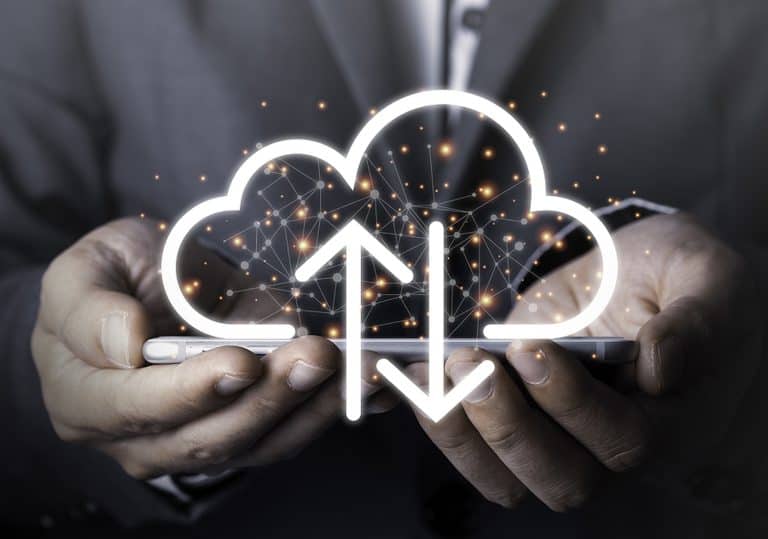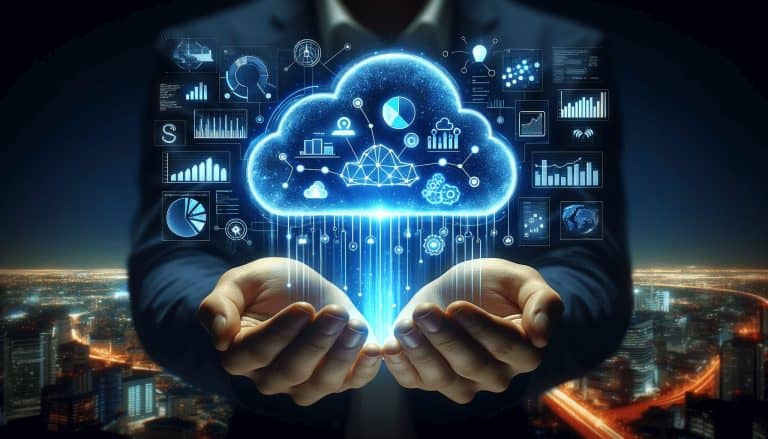As enterprises across the globe look to initiate or reach the next level of digital transformation, cloud computing is emerging as a key factor in modernizing existing information technology and communications infrastructure. In this article, we’ll be looking at the forces and technologies that are shaping next-generation cloud computing: new trends and research directions, as well as cloud computing market trends
Table of Contents
ToggleCurrent Trends in Cloud Computing
Serving as a platform for emerging technologies such as artificial intelligence (AI), blockchain, and the Internet of Things (IoT) continues to be one of the major trends in cloud computing 2020. This year looks set to build on the advances of 2019 when enterprises started to deploy workloads across multiple Infrastructure as a Service (IaaS) providers.
As more portable applications and data integration platforms enable smoother connectivity, among the top trends in cloud computing, will continue to be its capacity to change the ways in which users view data, the manner in which organizations look at their operations, and the various methods that engineers employ in design and building.
Cloud Computing Adoption Trends
With greater flexibility being offered to enterprises by multiple cloud providers, hybrid cloud will continue to be the deployment model of choice. This demand is most likely to be driven by several factors, including cost efficiency, scalability, agility, and security. Hybrid cloud provides economies of scale while also delivering the levels of security that organizations desire for their sensitive information.

The multi-cloud trend of 2019 that saw enterprises routinely deploying workloads over different Infrastructure as a Service providers is now evolving via hybrid cloud computing trends into an Omni-cloud ecosystem. Several factors are fueling this trend, including the increasing portability of software applications, greater ease of procuring compute cycles in real-time, streamlined connectivity from a new breed of data integration platforms, and the formation of cross-platform alliances between vendors.
Some organizations have realized a number of benefits from bringing together different cloud providers under a single umbrella, creating a federated cloud. This can provide the enterprise with a catalog of resources and services, in addition to allowing greater integration between applications and making them more portable. Federated clouds can help organizations address the vendor lock-in problem since applications and data can be easily migrated from one cloud to another.

With data centers occupying large amounts of land and consuming a lot of electricity to provide a centralized IT infrastructure, many organizations are looking for lower cost and lower consumption solutions in an increasingly sustainable and circular economy. This has led to the development of so-called micro clouds: networks of small, low cost, and low power processors co-located with routers and switches or located in dedicated spaces closer to user devices. In this way, it’s possible to reduce the latency of applications and minimize the frequency of communications between user devices and remote data centers.
A similar approach may be adopted for mobile computing, extending cloud infrastructure towards the edge of the network through a “cloudlet” to improve the latency and overall Quality of Service (QoS) of mobile applications.

Cloud Computing Market Trends
The research firm Gartner, Inc. looks at cloud computing news and the next generation cloud computing new trends and research directions and predicts that within this year, 75% of organizations will have deployed a multi-cloud or hybrid cloud infrastructure. And with the average cost of IT downtime close to $5,600 per minute, Gartner also foresees a rise in the market for Disaster Recovery as a Service (DRaaS), an automated strategy that can significantly reduce recovery times. IDC estimates that the DRaaS market will reach $4.5 billion in 2020, with a 15.4% growth through 2023.
Hyperconverged infrastructure (HCI) — an IT framework that integrates the traditional data center elements of compute, storage, and networking into modular units — is increasingly emerging as an alternative to public cloud platforms, enabling organizations to manage more of their IT resources in-house while reducing the costs associated with traditional data center systems.
The cloud market is also witnessing an increase in the popularity of containers — a technology that enables developers and network administrators to decouple a specific set of software applications from an operating system and have them run within a clean, minimal, and isolated environment of their own.
The Containers as a Service (CaaS) cloud computing service model allows software developers and IT departments to upload, organize, run, scale, manage, and stop containers by using container-based virtualization. By 2023, Gartner predicts that more than 70% of organizations worldwide will be running more than two containerized applications in production, up from less than 20% in 2019.

Future Technology Trends in Cloud Computing
Besides containers and hyper-convergence, there are a number of emerging technologies that are driving cloud computing trends.
Ad Hoc Cloud and Volunteer Computing
The concept of an ad hoc computing network isn’t new. For example, the Search for Extra-Terrestrial Intelligence (SETI) project has relied for decades on spare computing resources from the desktops of participants across the globe.
In a similar fashion, under-utilized resources such as servers can be harnessed to create an elastic ecosystem in contrast to existing cloud infrastructure that largely relies on data centers, and in which the resources available are known beforehand. With the increasing connectivity of a large variety of resources to the cloud, ad hoc solutions such as harnessing the spare resources of smartphones may be used in provisioning micro clouds and cloudlets that support low latency computing for non-critical applications in public spaces and transportation systems.
It’s anticipated that next-generation computing systems will integrate computing on cloudlets and micro cloud to service local traffic, thereby reducing network traffic towards cloud data centers.
Fog and Mobile Edge Computing (MEC)
Fog computing harnesses the existing compute resources on edge nodes, such as mobile base stations, routers, and switches, or integrates additional computing power to such nodes along the entire data path between user devices and a cloud data center. This technology approach will become viable if general-purpose computing can be facilitated on existing edge nodes, or if additional infrastructure such as micro clouds or cloudlets are deployed.

The potential benefits of fog computing include minimizing application latency and improving the Quality of Service (QoS) and Quality of Experience (QoE) for users while tapping into resources that are usually not employed for general-purpose computing. Preliminary research suggests that fog computing may find applications in areas such as online gaming and facial recognition.
Mobile Edge Computing or MEC is a similar approach for mobile cellular networks, which, however, does not harness computing capabilities along the entire path taken by data in the network. Here, the radio access network may be shared in order to reduce network congestion. In this manner, the response time for applications such as low latency content delivery, data analytics, and computational off-loading can be reduced.
Serverless Computing
Conventional cloud computing requires an application to be hosted on a Virtual Machine (VM), which in turn offers a service to the user. Since the service owner generally pays for the entire time that a server application is hosted (regardless of whether the service was used), the cost that filters down to the user is typically calculated on the basis of “per VM per hour” – a rate that doesn’t take into account the idle time when a Virtual Machine was provisioned, but the server was idle since there were no requests, or the application wasn’t running.
In so-called “serverless” computing, a server is not rented as a conventional cloud server, and considerations such as the residency of applications on a cloud VM are not taken into account. Since the infrastructure is abstracted away from the user, properties such as control, cost, and flexibility are instead considered.
With this technology, functions or modules of an application are executed on-demand, without requiring the application to be running all the time. An event may trigger the execution of a function or a number of functions in parallel. This model is often called Function as a Service (FaaS), or event-based programming. AWS Lambda24, IBM OpenWhisk25, and Google Cloud Functions are examples of platforms that currently support this architecture.
Summary:
Cloud Computing Trends
As enterprises across the globe look to initiate or reach the next level of digital transformation, cloud computing is emerging as a key factor in modernizing existing information technology and communications infrastructure. Serving as a platform for emerging technologies such as artificial intelligence (AI), blockchain, and the Internet of Things (IoT) continues to be one of the major trends in cloud computing. The cloud market is also witnessing an increase in the popularity of containers — a technology that enables developers and network administrators to decouple a specific set of software applications from an operating system and have them run within a clean, minimal, and isolated environment of their own. Ad Hoc Cloud and Volunteer Computing. Fog and Mobile Edge Computing (MEC). Serverless Computing.





